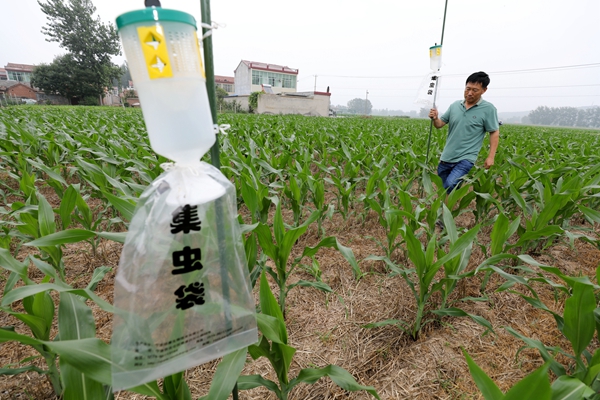Prepare for the worst, scope for the pest


Lifting the public's awareness of such invaders, and monitoring and detecting them, has become an urgent challenge for China in recent years.
In August, "how to prospectively predict the risk of new invasive alien species in China's agricultural and forestry ecosystem and control them in a timely manner" was added to the 2020 list of major engineering technical problems to be solved by the Chinese Association for Science and Technology.
Wu thinks it's necessary to enhance the capability to cope with invasive alien species to safeguard the nation's food security and ecology.
The invasive alien species in China's agricultural and forestry ecosystem include insects, plants, viruses, fungi and bacteria. Most of them come through coastal areas and borders. They are introduced under natural, accidental and intentional circumstances, and sometimes a combination of the three.
According to Liu, it was the latter which was the major source of the invasive alien species in China in last century.
"China has a long history of introducing species for multiple purposes, including economic benefit, ornamental value and environmental protection," he says. "Some species may escape the confines of their enclosures or cultivation and become invasive."
Alternanthera philoxeroides, or alligator weed, which is a native species of South America, was introduced to China in the 1930s as horse fodder.
It affects both aquatic and terrestrial environments and was put on the list of the first batch of invasive alien species in China in 2003.
Yin Wandong, lecturer at the School of Life Sciences, Henan University, says, these days, a more comprehensive risk evaluation process is held before an exotic species is introduced to China.
In the past couple decades, as international trade, transportation and tourism have grown, more invasive alien species have been introduced to China unintentionally.
Personal pets, particularly aquatic ones, are sometimes a source-for instance, people buy turtles like trachemys scripta elegans, or the red-eared slider, and end up setting them free, which has led to non-native turtle invasions in many places in China.
Even seeds stuck to a tourist's shoe can become an invasive alien species.
Yin says people should raise their awareness of invasive alien species, which can even be introduced by shopping online from overseas.
"Some invasive alien species threaten people's health and they are not far away from people's daily life," Yin says. "Take ambrosia artemisiifolia, or annual ragweed, as an example, ragweed pollen is a common, powerful allergen and is produced in massive amounts."


































